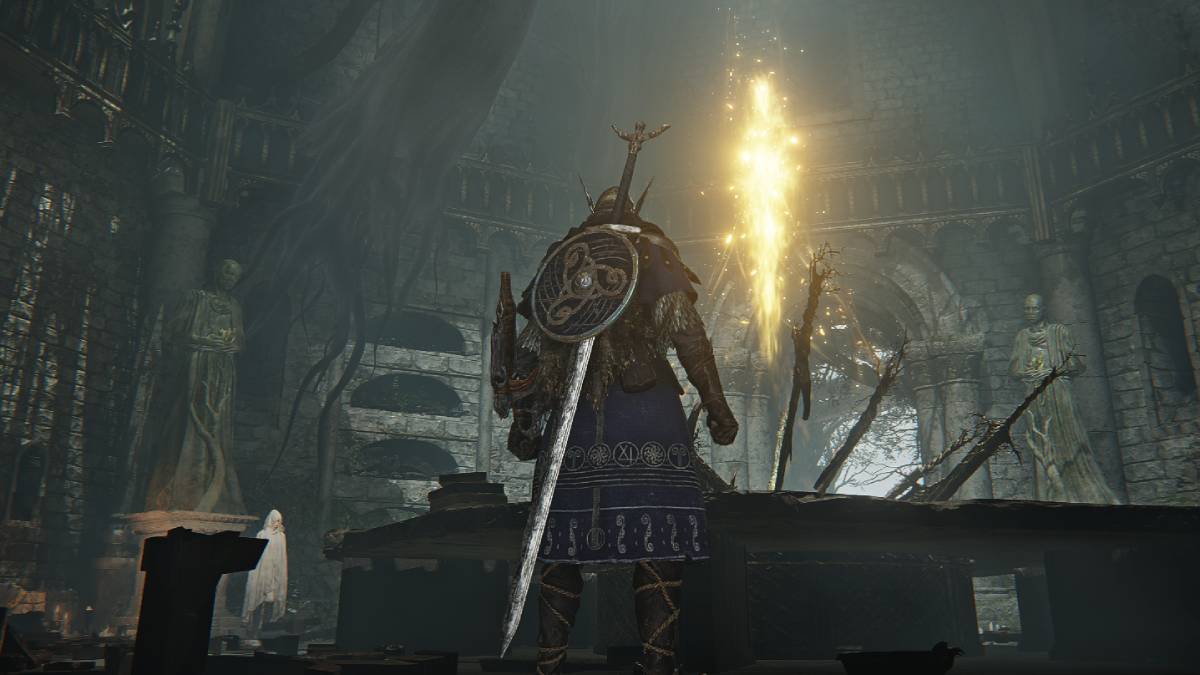You can trust VideoGamer. Our team of gaming experts spend hours testing and reviewing the latest games, to ensure you're reading the most comprehensive guide possible. Rest assured, all imagery and advice is unique and original. Check out how we test and review games here
Death comes for us all, especially in Nightreign given Limveld is peppered with dangers, mini bosses, and the enclosing Night’s Tide, not to speak of the Nightlords you’ll have to contend with at the end of each Expedition. Teammates of questionable skill, a botched dodge, or an ill-judged sprint into the fiery rain to grab a flask upgrade – there are many ways your Nightfarer can fall.
Though you’ll get very well acquainted with FromSoft’s signature You Died screen all over again, the developer has introduced some mechanics to make death not quite as definitive. In this guide, we’ll walk you through all the details around the Near-Death state, Revivals, and how to revive teammates in Elden Ring Nightreign.
Near-Death and Revival explained
When your character HP is depleted, you’ll go into what’s called a Near-Death state. This is shown on screen a circular HUD element with three segments, one or multiple of which will be filled up with a purple gauge, and a timer around the outer border. This state is best seen as a sort of pre-death condition where there’s still the option for your teammates to revive you.
The number of filled-in purple segments is determined by the number of times the player has entered a Near-Death state recently. One tranche will fill up for the first death, two for the second, and so on up to three segments. The gauge will, however, reset if the player doesn’t die for a period of time.
Should the timer run out before your teammates are able to revive you, you’ll die and respawn at the last Site of Grace you visited. If the timer runs out and you’re in the Night’s Tide outside of the circle, you’ll spawn in a location that’s considered safe within the circle near your teammates. Regardless of where you respawn, you’ll lose a level, but you can retrieve your lost Runes by returning to the site of your death, either from the ground or by killing an enemy who has grabbed them in your absence.
Death works differently when you’re fighting a day-end boss or the Nightlord. In these fights, the Near-Death timer is removed and you won’t respawn. The only way to revive is via teammates. If all three players enter a Near-Death state, the Expedition ends.
Though these rules are implemented firmly, there are some exceptions. The Wylder’s passive, Sixth Sense, allows you to cheat death a single time, even in day-end and Nightlord boss fights. The ability resets whenever you visit a Site of Grace. Additionally, the Wending Grace item, bought from Merchants or found out in Limveld, lets you cheat death once and revives you immediately should you die. It’s well worth getting if you have the Runes to spare before taking on a Nightlord.
How to revive teammates in Elden Ring Nightreign
To revive a teammate in a Near-Death state, you’ll need to repeatedly attack them with either melee or ranged attack until the purple segments are removed, at which point they’ll come back to life and recover some HP.
Though standard attacks are your bread and butter to revive downed teammates, certain Nightfarer skills also work. In particular, the Ironeye’s Single Shot, the Guardian’s Wings of Salvation, and the Revenant’s Immortal March Ultimate Arts are fantastic options for reviving teammates almost immediately and avoid bashing away at them with melee or bow attacks from a distance. It’s also worth picking up a bow if you can to give you the option for reviving a teammate from a much safer position than jumping in for melee hits at the center of a fight.
For more help exploring Limveld, check out our primer on the new traversal movement options, how to unlock the Duchess and Revenant classes, and how to unlock the Dresser to equip your Nightfarer with new skins.
Elden Ring Nightreign
- Platform(s): PC, PlayStation 5, Xbox Series S/X
- Genre(s): Action RPG, Multiplayer, Roguelike








